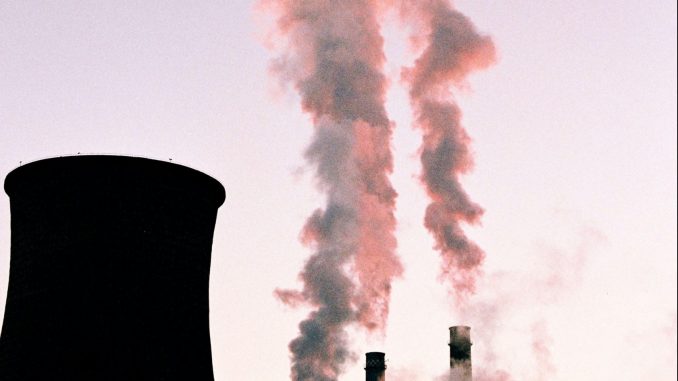
In April, after years of emotional and highly politicized debate, Germany turned the page on nuclear energy, as the three remaining nuclear power plants were shut down. Since then, a “cocktail” of obstacles for companies has installed itself. Despite the fact that 60% of Germans believe that powering down nuclear reactors is a bad idea, it is now companies who are reinforcing that point to the German government. Energy prices in Germany are so high that some companies are considering leaving the country altogether according to Siegfried Russwurm, head of the German Industry Federation (BDI).
A heady cocktail indeed, the potential drain of German industry and the effects of climate change are becoming ever more palpable. The winter and spring have been drier in Europe than they should have been, affecting crops and water reserves. The symptoms of climate change are all around: drought, wildfires, flash floods, and heat waves. While the sensation that things aren’t going well may be difficult to quantify, the financial burden of climate change is easier to put into numbers.
In 2021, French insurer Covéa Group, active in both the insurance and reinsurance markets, published a white paper on the complex modeling of climate risks. It was found that the annual cost of climate change has tripled since the end of the 1980s. The cost of droughts for the insurance market amounted to nearly €15.2 billion between 1989 and 2020 and the cost of floods amounted to €21.6 billion between 1982 and 2020. Furthermore, in France, by 2050 flood-related damages are expected to increase by 110%, the frequency of severe drought episodes by 70%, and hailstorms by over 40%. To put it neatly, climate change is expensive.
Reinsurance: stewards of sustainability
It’s no coincidence that a company such as Covéa would provide such a detailed view of climate change impact. Indeed, while certain decisions are clearly colored by emotion and politics, the often-overlooked sector of reinsurance offers a path forward based on decision-making driven by a technical outlook. Developing innovative ways of managing tail risk and the continued refinement of sophisticated catastrophe models allows for thoughtful decision-making when it comes to countering climate change. The reinsurance industry is a powerful force for sustainability to have in its corner.
In essence, reinsurers are the insurers of the insurance companies. This becomes relevant when claims reach a level a primary insurance company is unable to cover. While a primary insurance company will pay out smaller sums with a high frequency a reinsurer will pay out high sums with a lower frequency. Unsurprisingly, primary insurance companies have a vested interest in making sure drivers don’t get into car accidents to avoid paying out claims. Reinsurers, on the other hand, have a vested interest in there being as few natural disasters as possible. As the correlation between climate change and extreme weather events becomes stronger, the decision of reinsurers to be champions of sustainability is coherent.
In the world of reinsurance, the risks of climate change are tangible and as previously mentioned, expensive. Reinsurers are rarely climate skeptics nor in denial about the repercussions of climate change, thus, they have unexpectedly become a key player in accelerating climate change adaptation and green transition finance. To combat said risk, Covéa uses a specialist model called RiskWeatherTech. The Chief Scientific Officer at RiskWeather Tech states, “RiskWeatherTech, a specialist in modeling natural risks and the impact of climate change… on anticipating and managing climate risk…in order to help them make the right decisions in terms of adaption and mitigation.”
Model-driven risk mitigation allows reinsurers to engage with clients on ESG issues and green investments. Insurance firms are able to act as a sort of Northern compass for many clients when it comes to sustainability. Particularly in Europe, insurers are paving the way by phasing out high-emitting counterparties and divesting from high-polluting sectors like coal.
A lesson in future risks
The contribution of reinsurers goes beyond the simple fact of being the insurers of insurers and paying out eye-watering sums in moments of natural catastrophe. The voice that reinsurers have is one that resonates and brings clear-eyed judgment based on models and experience on what is sustainable and what is not. A clear illustration of this is the fact that certain climate-related risks could become uninsurable. Hypothetically, certain actuary/insurance models could judge that in 10 years time wildfires will be uninsurable. While everyone agrees that climate change is a threat, the idea of something being uninsurable illustrates a real price. The concept of uninsurability forces people, businesses, and governments to acknowledge that climate change has very tangible costs which go beyond a simple threat.
At a time when the choices being made for and against climate change are deeply emotional or political, it can be of profound relief to heed the experience and guidance of reinsurance companies whose actions are based on risk avoidance and resource protection. Their decisions are based on a macro view of the world, experience in managing tail risk, and the help of sophisticated catastrophe models. As Germany moves forward without nuclear energy as a part of its energy mix, the 30 million tons of CO2 saved annually will need to come from other economies in the remaining energy sources. Where and how remains to be seen, however, as Germany experienced with the deadly floods it faced last year, the consequences of climate change are swift and violent. And while reinsurers are there to help with the rebuilding phase, it is up to Germany to choose a path forward that puts sustainability at the forefront.


Leave a Reply